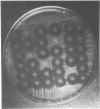Abstract
Spontaneous, low-frequency loss of ability to produce streptococcin A-FF22 (SA) by group A streptococcus strain FF22 was observed. The proportion of non-SA-producing (SA−) derivatives occurring in strain FF22 cultures grown in Todd Hewitt broth supplemented with 1% of yeast extract (THBY) was increased on treatment with ethidium bromide, acriflavin, or rifampin. The highest incidence of SA− organisms, however, was found in untreated THBY cultures that had been aging by incubation at 37°C for several months. The possibility of selective effects in these experiments, operating to enhance the apparent frequency of SA− bacteria, was discounted. The survival of SA− derivatives in association with populations of SA+ bacteria was dependent upon the use of culture conditions inimical to SA activity, since a consistent finding was that the loss of ability to produce SA was associated with loss of immunity to the killing action of this bacteriocin. Whereas selective killing of SA− derivatives was evident in mixed cultures of SA+ and SA− strains in tryptic soy broth, no such effect was demonstrable in THBY. In these experiments, elimination of SA− cells seemed directly related to the presence of active SA. Purified clones of SA− substrains did not seem revertible to SA production, either spontaneously or on treatment with nitrosoguanidine. It is suggested that the property of production of SA by group A streptococcus strain FF22, together with that of host cell immunity to the homologous bacteriocin, may be mediated by plasmid-borne genetic determinants.
Full text
PDF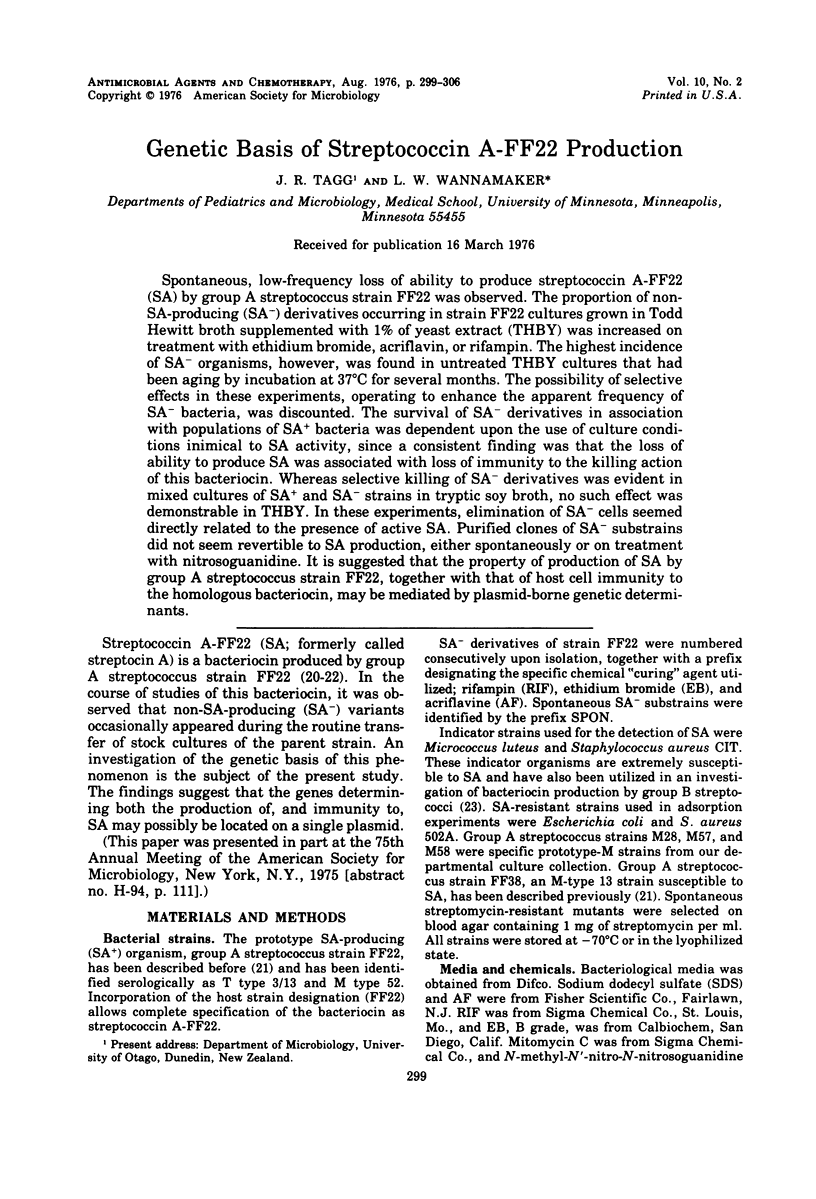
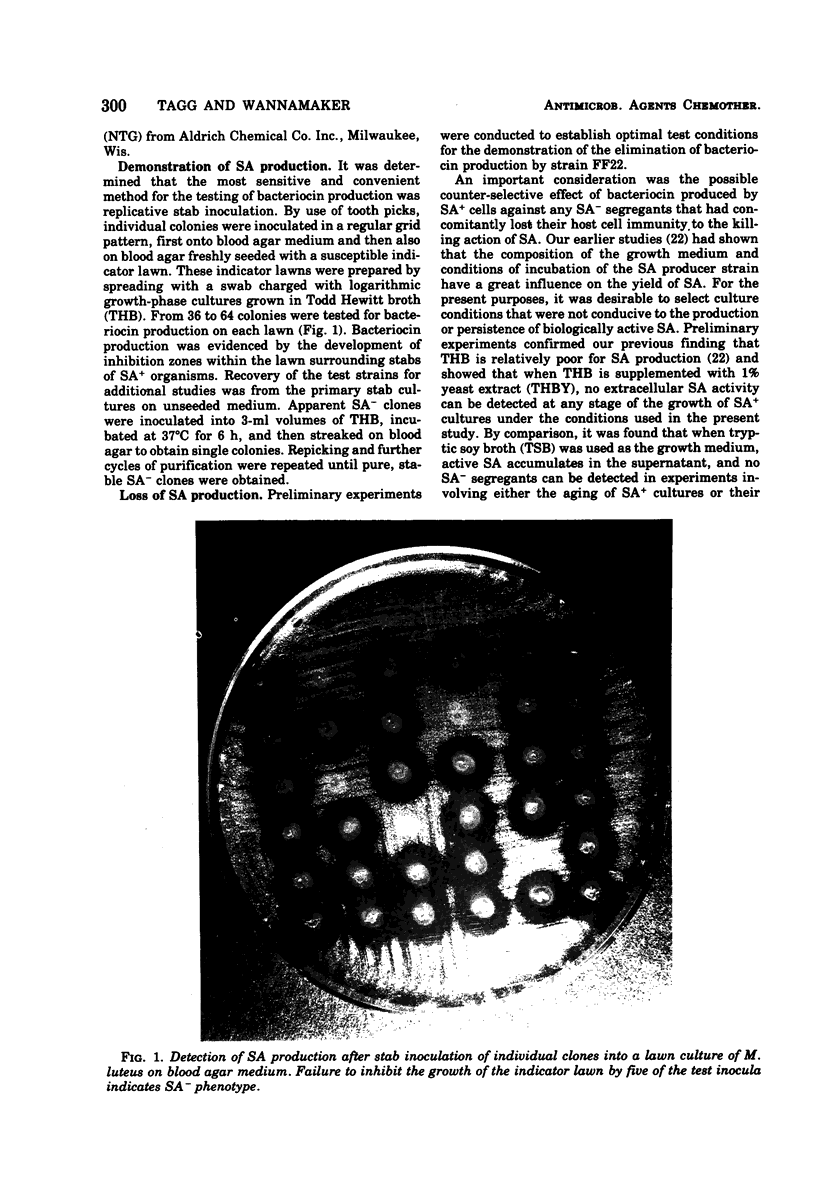
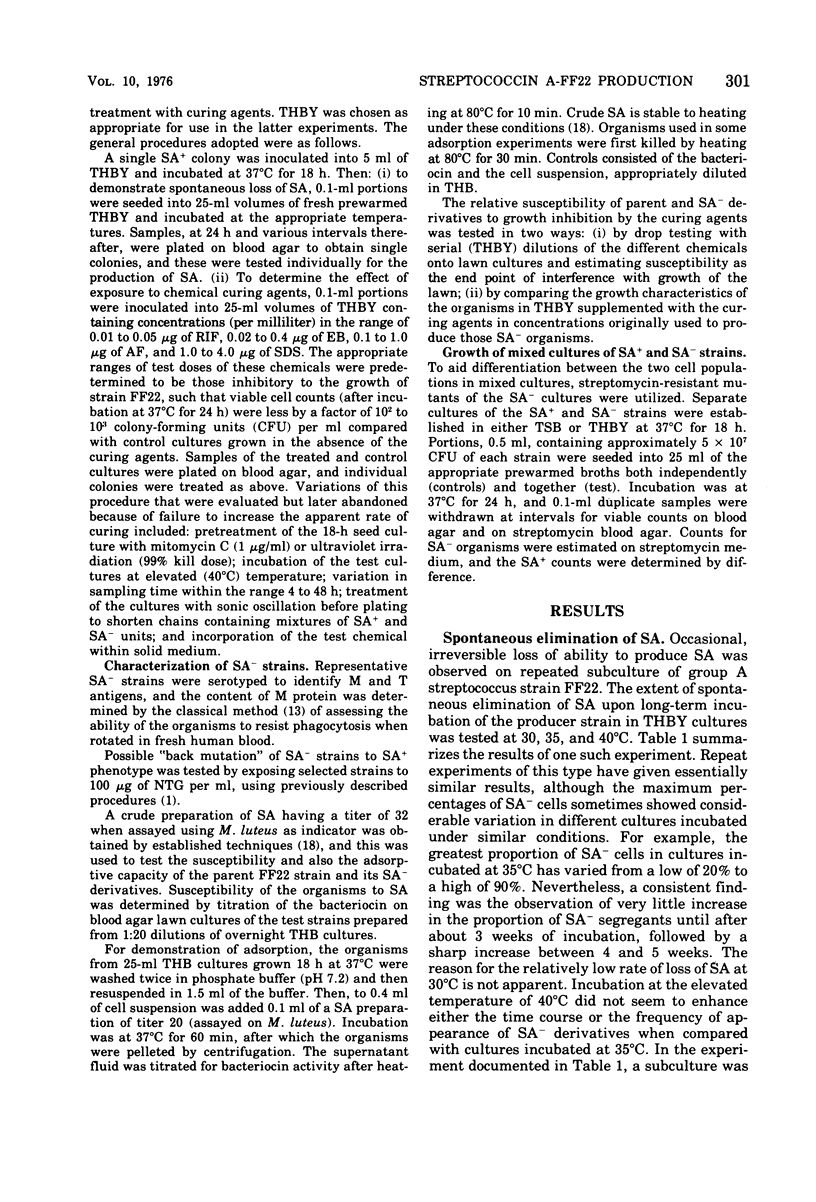
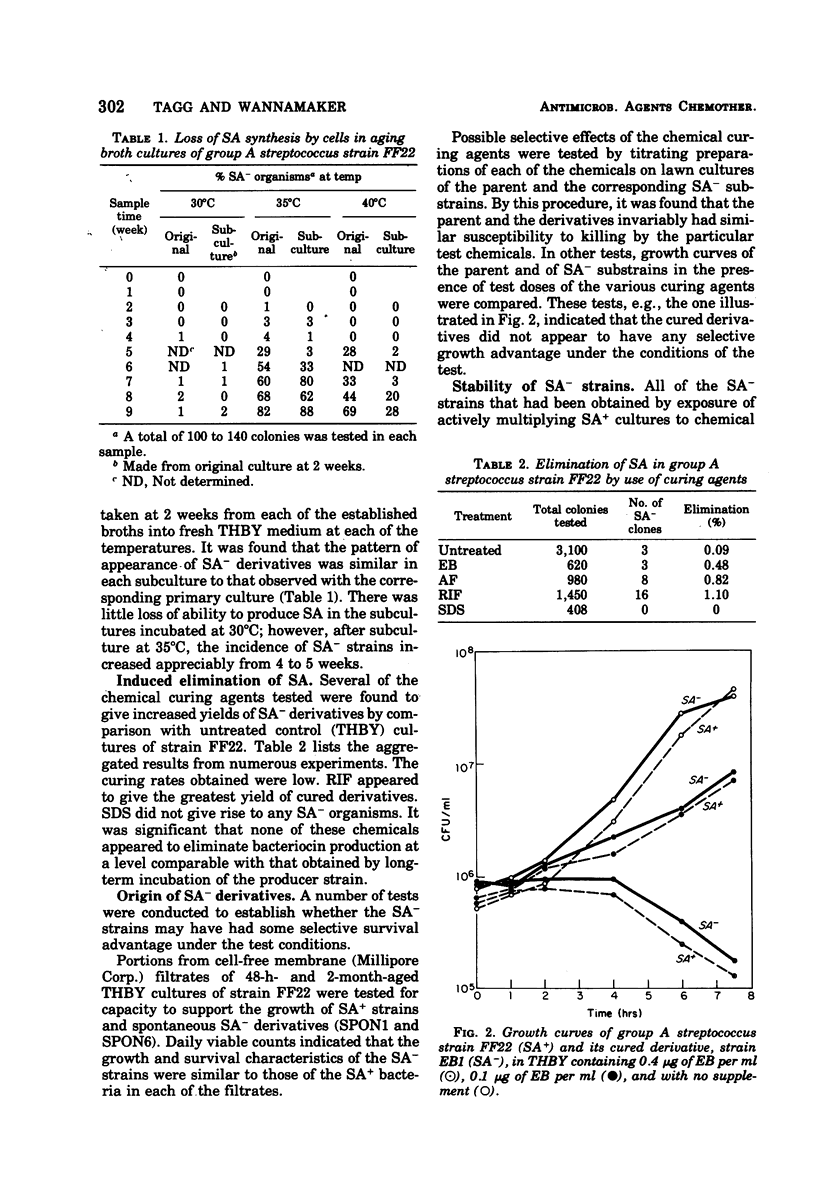
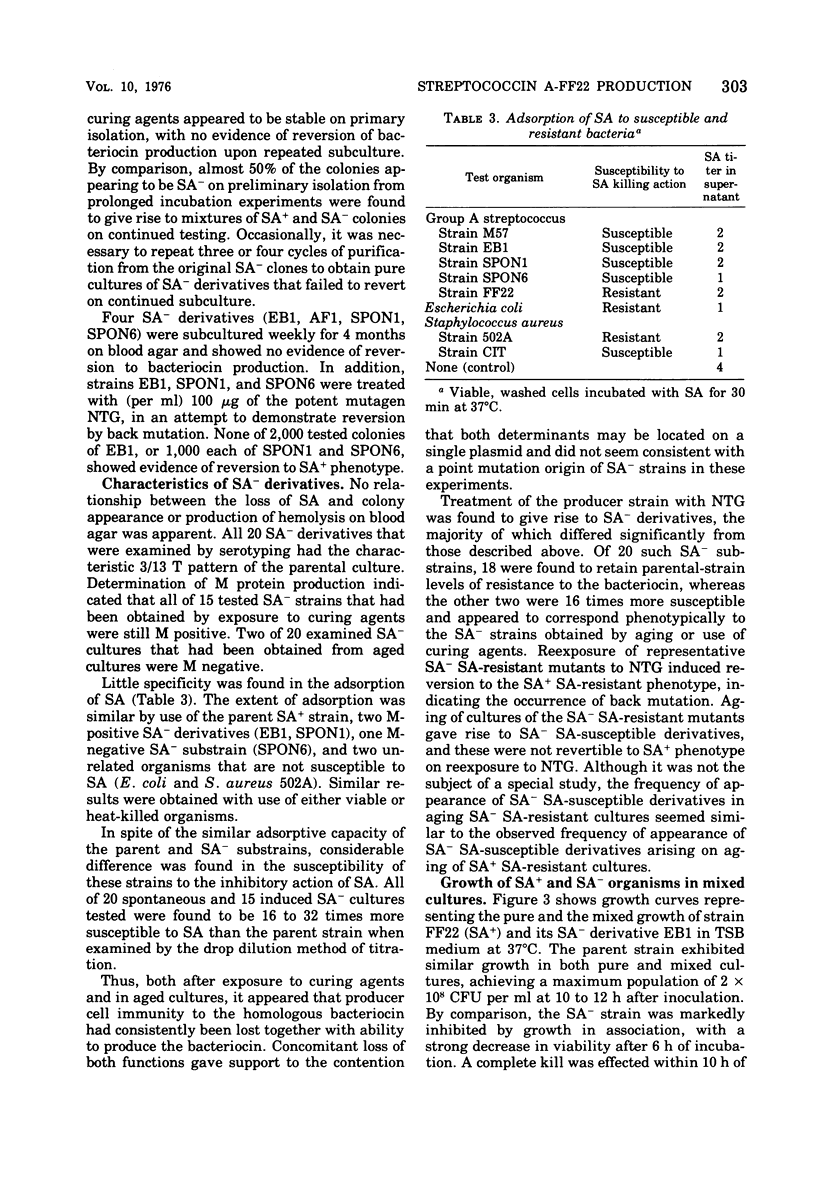
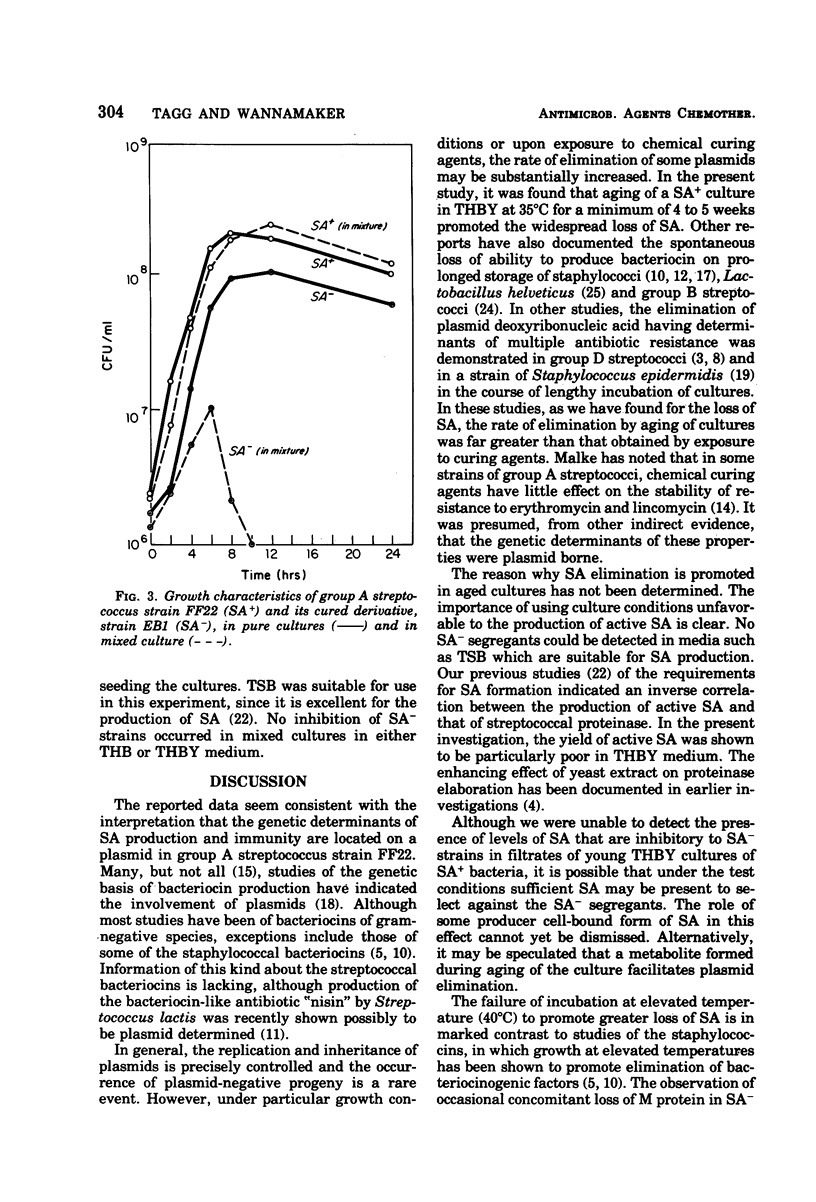
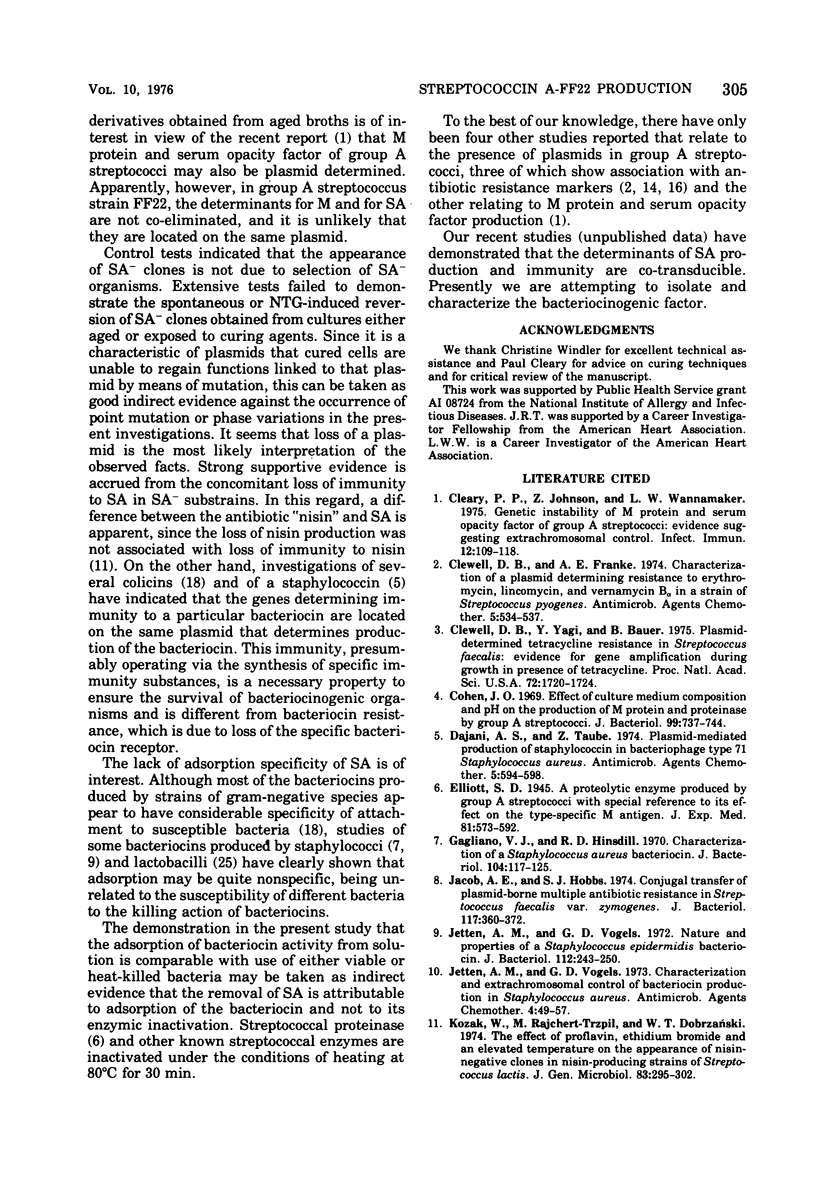
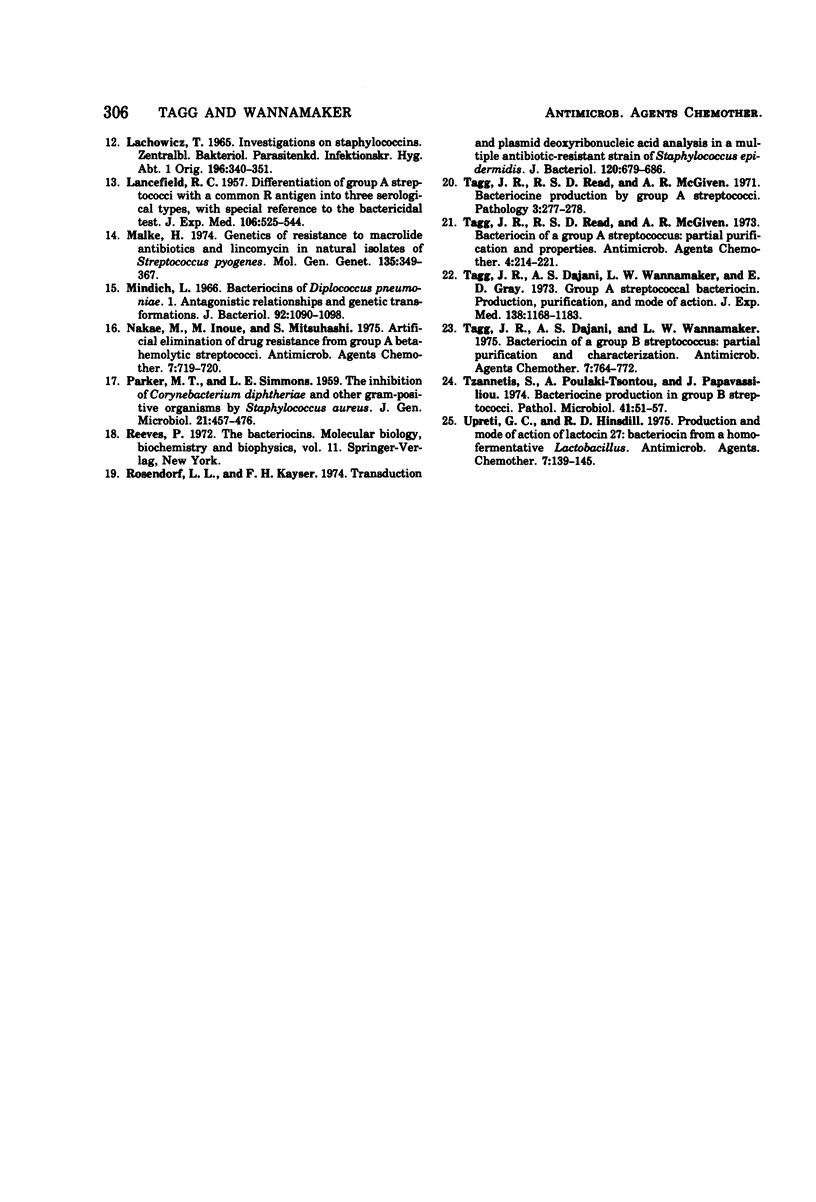
Images in this article
Selected References
These references are in PubMed. This may not be the complete list of references from this article.
- Cleary P. P., Johnson Z., Wannamaker L. Genetic instability of M protein and serum opacity factor of group A streptocci: evidence suggesting extrachromosomal control. Infect Immun. 1975 Jul;12(1):109–118. doi: 10.1128/iai.12.1.109-118.1975. [DOI] [PMC free article] [PubMed] [Google Scholar]
- Clewell D. B., Franke A. E. Characterization of a plasmid determining resistance to erythromycin, lincomycin, and vernamycin Balpha in a strain Streptococcus pyogenes. Antimicrob Agents Chemother. 1974 May;5(5):534–537. doi: 10.1128/aac.5.5.534. [DOI] [PMC free article] [PubMed] [Google Scholar]
- Clewell D. B., Yagi Y., Bauer B. Plasmid-determined tetracycline resistance in Streptococcus faecalis: evidence for gene amplification during growth in presence of tetracycline. Proc Natl Acad Sci U S A. 1975 May;72(5):1720–1724. doi: 10.1073/pnas.72.5.1720. [DOI] [PMC free article] [PubMed] [Google Scholar]
- Cohen J. O. Effect of culture medium composition and pH on the production of M protein and proteinase by group A Streptococci. J Bacteriol. 1969 Sep;99(3):737–744. doi: 10.1128/jb.99.3.737-744.1969. [DOI] [PMC free article] [PubMed] [Google Scholar]
- Dajani A. S., Taube Z. Plasmid-mediated production of staphylococcin in bacteriophage type 71 Staphylococcus aureus. Antimicrob Agents Chemother. 1974 Jun;5(6):594–598. doi: 10.1128/aac.5.6.594. [DOI] [PMC free article] [PubMed] [Google Scholar]
- Gagliano V. J., Hinsdill R. D. Characterization of a Staphylococcus aureus bacteriocin. J Bacteriol. 1970 Oct;104(1):117–125. doi: 10.1128/jb.104.1.117-125.1970. [DOI] [PMC free article] [PubMed] [Google Scholar]
- Jacob A. E., Hobbs S. J. Conjugal transfer of plasmid-borne multiple antibiotic resistance in Streptococcus faecalis var. zymogenes. J Bacteriol. 1974 Feb;117(2):360–372. doi: 10.1128/jb.117.2.360-372.1974. [DOI] [PMC free article] [PubMed] [Google Scholar]
- Jetten A. M., Vogels G. D. Characterization and extrachromosomal control of bacteriocin production in Staphylococcus aureus. Antimicrob Agents Chemother. 1973 Jul;4(1):49–57. doi: 10.1128/aac.4.1.49. [DOI] [PMC free article] [PubMed] [Google Scholar]
- Jetten A. M., Vogels G. D. Nature and properties of a Staphylococcus epidermidis bacteriocin. J Bacteriol. 1972 Oct;112(1):243–250. doi: 10.1128/jb.112.1.243-250.1972. [DOI] [PMC free article] [PubMed] [Google Scholar]
- Kozar W., Rajchert-Trzpil M., Dobrzański W. T. The effect of proflavin, ethidium bromide and an elevated temperature on the appearance of nisin-negative clones in nisin-producing strains of Streptococcus lactis. J Gen Microbiol. 1974 Aug;83(2):295–302. doi: 10.1099/00221287-83-2-295. [DOI] [PubMed] [Google Scholar]
- LANCEFIELD R. C. Differentiation of group A streptococci with a common R antigen into three serological types, with special reference to the bactericidal test. J Exp Med. 1957 Oct 1;106(4):525–544. doi: 10.1084/jem.106.4.525. [DOI] [PMC free article] [PubMed] [Google Scholar]
- Malke H. Genetics of resistance to macrolide antibiotics and lincomycin in natural isolates of Streptococcus pyogenes. Mol Gen Genet. 1974;135(4):349–367. doi: 10.1007/BF00271149. [DOI] [PubMed] [Google Scholar]
- Mindich L. Bacteriocins of Diplococcus pneumoniae. I. Antagonistic relationships and genetic transformations. J Bacteriol. 1966 Oct;92(4):1090–1098. doi: 10.1128/jb.92.4.1090-1098.1966. [DOI] [PMC free article] [PubMed] [Google Scholar]
- Nakae M., Inoue M., Mitsuhashi S. Artificial elimination of drug resistance from group A beta-hemolytic streptococci. Antimicrob Agents Chemother. 1975 May;7(5):719–720. doi: 10.1128/aac.7.5.719. [DOI] [PMC free article] [PubMed] [Google Scholar]
- PARKER M. T., SIMMONS L. E. The inhibition of Corynebacterium diphtheriae and other gram-positive organisms by Staphylococcus aureus. J Gen Microbiol. 1959 Oct;21:457–476. doi: 10.1099/00221287-21-2-457. [DOI] [PubMed] [Google Scholar]
- Rosendorf L. L., Kayser F. H. Transduction and plasmid deoxyribonucleic acid analysis in a multiply antibiotic-resistant strain of Staphylococcus epidermidis. J Bacteriol. 1974 Nov;120(2):679–686. doi: 10.1128/jb.120.2.679-686.1974. [DOI] [PMC free article] [PubMed] [Google Scholar]
- Tagg J. R., Dajani A. S., Wannamaker L. W. Bacteriocin of a group B streptococcus: partial purification and characterization. Antimicrob Agents Chemother. 1975 Jun;7(6):764–772. doi: 10.1128/aac.7.6.764. [DOI] [PMC free article] [PubMed] [Google Scholar]
- Tagg J. R., Dajani A. S., Wannamaker L. W., Gray E. D. Group A streptococcal bacteriocin. Production, purification, and mode of action. J Exp Med. 1973 Nov 1;138(5):1168–1183. doi: 10.1084/jem.138.5.1168. [DOI] [PMC free article] [PubMed] [Google Scholar]
- Tagg J. R., Read R. S., McGiven A. R. Bacteriocin of a group A streptococcus: partial purification and properties. Antimicrob Agents Chemother. 1973 Sep;4(3):214–221. doi: 10.1128/aac.4.3.214. [DOI] [PMC free article] [PubMed] [Google Scholar]
- Tzannetis S., Poulaki-Tsontou A., Papavassiliou J. Bacteriocine production in group B streptococci. Pathol Microbiol (Basel) 1974;41(1):51–57. doi: 10.1159/000162563. [DOI] [PubMed] [Google Scholar]
- Upreti G. C., Hinsdill R. D. Production and mode of action of lactocin 27: bacteriocin from a homofermentative Lactobacillus. Antimicrob Agents Chemother. 1975 Feb;7(2):139–145. doi: 10.1128/aac.7.2.139. [DOI] [PMC free article] [PubMed] [Google Scholar]



